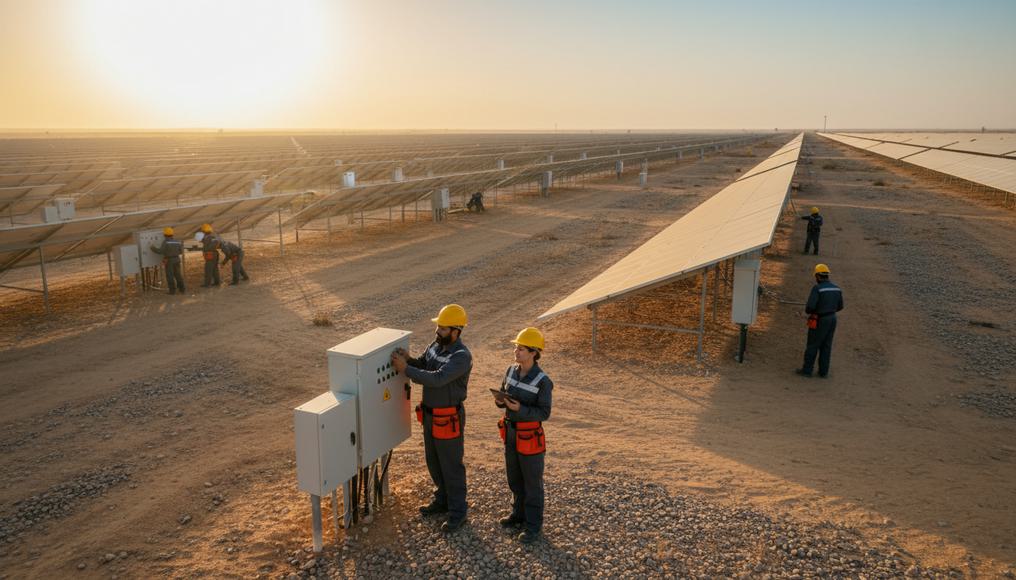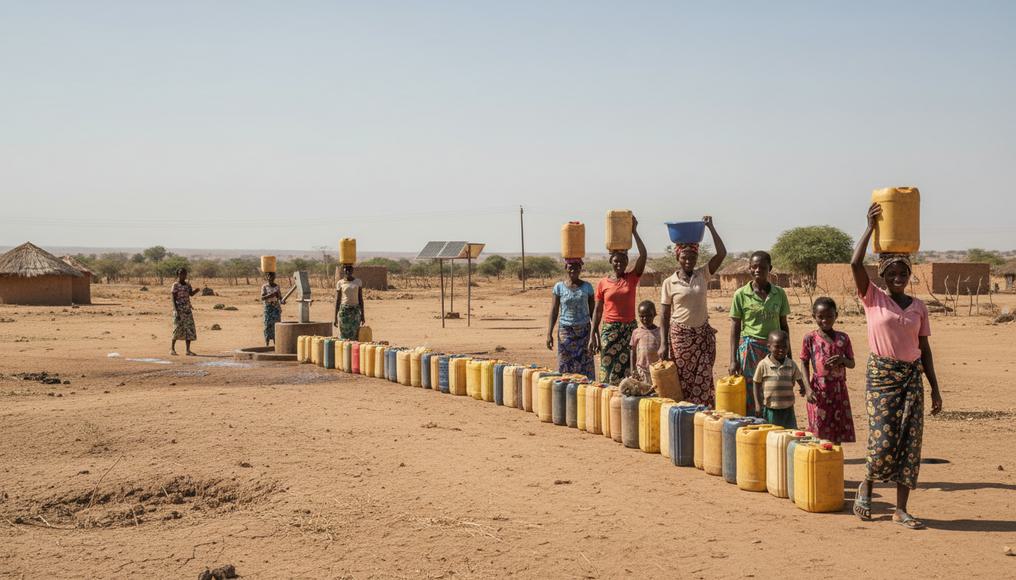
The Fundamental Problem of Scarcity: Unlimited Wants vs. Limited Resources
Imagine standing at an endless buffet with just three plates to fill—your mind races between pizza, sushi, and that irresistible chocolate fountain, but reality forces tough picks. This captures scarcity in economics perfectly, the core challenge where human desires stretch infinitely while resources like time, money, land, and water remain severely restricted. Far from a boring textbook concept, scarcity explains everyday decisions, from managing pocket money to why governments grapple with national budgets.
In essence, scarcity in economics drives the need for prioritization because we simply can’t satisfy all wants. On a larger scale, it’s fueling urgent global issues in 2025, such as floods and conflicts displacing millions in regions like Sudan, where over 7.7 million people face acute hunger due to environmental disasters and geopolitical tensions.[1] Water scarcity adds another layer, with 25 countries experiencing extremely high stress levels, disrupting agriculture and daily access for billions worldwide.[2] For A-level students diving into economics, grasping this concept illuminates why prices fluctuate wildly or why families set boundaries on screen time and extras. To build a strong foundation in these ideas, check out our detailed guide on CAIE AS Level Economics: Scarcity, PPCs, and Resource Allocation, which dives deeper into opportunity cost and production possibilities.
Yet, scarcity isn’t all doom—it’s a catalyst for creativity and progress. In parts of Africa, where 300 million people lack reliable clean water, the annual economic toll from agricultural losses alone reaches $30-60 billion, spurring innovations like efficient irrigation systems.[3] So, when you chase that limited-edition gadget next, think of scarcity in economics as the force adding excitement and urgency to life.
Real-Life Example:
Skipping study time for a marathon viewing of your favorite show? That’s scarcity of hours at play, often leading to the nagging worry of exam underperformance.
Practical Tips:
- For one week, journal your wants versus what’s feasible—note three desires you couldn’t fulfill and the reasons behind them.
- Scan a current 2025 news story on global crises and identify the scarcity elements to connect it directly to your economics syllabus.

Navigating Choices in Economics: Scarcity’s Impact on Everyone
Scarcity in economics doesn’t play favorites; it infiltrates decisions at every level, transforming individuals, businesses, and governments into constant choosers. This principle underscores the ‘no free lunch’ idea: every selection involves forgoing an alternative. For those studying A-level economics, mastering choices across these scales is key to acing analytical questions.
Consider personal finances: with limited funds, you might opt for new sneakers over extra groceries. Echoes of the post-COVID economy into 2024 show how inflation pushed many to prioritize essentials, slashing leisure spending and reshaping habits.[4] Businesses face similar dilemmas; during the semiconductor shortage recovery, automakers had to decide between stockpiling chips or investing in facility expansions, ultimately pausing production lines and shifting focus to booming renewable energy sectors.[5] Governments, meanwhile, balance act in a projected 2.9% global growth environment for 2025, weighing healthcare investments against defense needs amid rising aid demands—82% of humanitarian funds targeting just 11% of the world’s crises, like those in Myanmar.[6]
Choices in economics aren’t mere routine; they’re the threads preventing total disorder in markets and societies. If you’re still engaged, you’re building a strong foundation ahead of your peers.
Real-Life Example:
Picture a tech firm like those in the auto industry channeling resources into R&D for sustainable tech instead of short-term profits—mirroring how chip constraints accelerated U.S. wind energy capacity by 6.5 GW.
Practical Tips:
- Simulate a government budget: Distribute £100 across categories like education and infrastructure, explaining your allocations and omissions.
- Analyze a recent business decision from the news, such as investments in electric vehicle batteries, and discuss the pros and cons with a friend.

Opportunity Cost Explained: The Hidden Price of Decisions
Opportunity cost in economics is that subtle reminder of what you sacrifice when making a choice—it’s not just the money spent, but the value of the next-best option you pass up. Stemming directly from scarcity, it turns every decision into a calculated trade-off. A-level learners can leverage this to excel in essays requiring trade-off explanations. For more practice, explore our CAIE AS Economics Topic Questions, which include MCQs on opportunity cost and scarcity to test your understanding.
Take a straightforward scenario: Using your lunch budget on coffee means the opportunity cost is the nutritious meal you could have had instead. As philosopher Henry David Thoreau noted, the true price of something is the life you trade for it. In modern contexts, like the rise of remote work in 2024, enjoying flexible hours comes at the cost of missed networking opportunities that might accelerate career growth.[7] Opportunity costs break down into explicit ones (direct expenses, like course fees) and implicit ones (foregone time, such as leisure lost to work, or a company’s skipped employee training for equipment upgrades).
Understanding opportunity cost sharpens decision-making from intuition to strategy. In agriculture, dedicating land to biofuel crops can reduce food availability, a critical issue as 2 billion people confront water scarcity by 2025.[8][9] During the COVID-19 response, budget reallocations carried an extra $1.2-1.6 opportunity cost per dollar shifted, stunting long-term economic recovery.[10] Overlook it, and decisions become gambles in life’s high-stakes arena.
Real-Life Example:
Opting for university entrance exams over a part-time summer gig? The opportunity cost includes potential earnings of £500 plus invaluable relaxation time—much like the relentless trade-offs in films portraying the pursuit of dreams.
Practical Tips:
- Assess a daily choice: ‘An hour on social media costs me study time—what’s its real value?’
- In your assignments, link opportunity cost to specific levels, such as how government green energy funding might reduce social welfare spending.

The Core Economic Questions: What, How, and For Whom?
Scarcity in economics poses three pivotal questions that guide resource allocation: What to produce? How to produce it? And for whom? These dilemmas determine whether societies achieve balanced growth or exacerbate inequalities, especially in the 2.9% global expansion forecast for 2025.[11] For a broader overview of these foundational concepts in the CAIE syllabus, our CAIE AS Level Economics 2025–2026: Beginner’s Essential Guide covers key topics like microeconomics and resource allocation to support your studies.
What to Produce:
Should resources go to necessities or luxuries? Market forces follow consumer demand, but scarcity demands a focus on essentials. The 2025 renewable energy surge exemplifies this, with global solar capacity reaching 1,866 GW as nations pivot from fossil fuels to sustainable alternatives.[12] In the U.S., housing shortages persist while clean energy additions hit 39.6 GW of new solar in 2024, highlighting resource shifts.[13] Free markets prioritize profitable goods like high-end vehicles over staples, while planned economies emphasize equity, though each has flaws.
How to Produce:
The focus is on efficiency—getting the most output from limited inputs while minimizing environmental harm. The chip crisis forced automakers to optimize supply chains, boosting sectors like wind power.[14] Solutions to overfishing include advanced technology and regulations to preserve marine resources.[15] To apply this: Identify scarce factors, measure productivity, prioritize sustainability, and balance costs like automation’s job impacts.
For Whom to Produce:
Does output favor the wealthy or the needy? Markets reward purchasing power, but governments intervene for fairness through policies. During COVID-19, vaccines were allocated to essential workers first on ethical grounds. In 2025, progressive taxation funds subsidies for clean energy access, aiding over 100 million in humanitarian crises.[1][16] The trade-off? Equity measures can hinder efficiency, but neglecting them widens divides.
These questions serve as economics’ roadmap through scarcity challenges—you’re equipped to navigate them now.
Real-Life Example:
Much like resource distribution in survival narratives, governments use subsidies to decide ‘for whom,’ converting potential chaos into equitable systems.
Practical Tips:
- Argue a classic debate: In scarcity, prioritize military or civilian goods? Present both perspectives.
- Create a simple flowchart for a business: From inputs and methods to outputs and beneficiaries.

Scarcity in Action: Real-World Economics Examples
Scarcity isn’t abstract—it’s evident in global events, from pandemics to environmental shifts. The COVID-19 aftermath saw scarce medical supplies prioritizing health over immediate economic stimuli, with reallocations delaying infrastructure projects at significant opportunity costs.[17] Allocation strategies placed vaccines with high-risk groups, addressing the ‘for whom’ question.
Climate change amplifies water scarcity, prompting choices between cash crops and biofuels in dry regions, costing Africa $30-60 billion yearly in productivity.[3] By 2025, 2 billion could face thirst, but innovations like precision farming offer solutions.[8] Renewable investments hit $2 trillion in 2024, trading fossil dependencies for solar and wind gains.[18] As one expert puts it, ‘Scarcity is the problem’—prompting reforms like fishing quotas to rethink production priorities.
On a lighter note, budgeting my own daily coffee led to some unexpected compromises. These cases provide rich material for your exams.
Real-Life Example:
Streaming services juggle limited bandwidth by greenlighting hit shows over experimental ones—the opportunity cost? Potential audience dissatisfaction.
Practical Tips:
- Select a 2025 news item, like trade disputes, and apply the three economic questions.
- Track your weekly allocations: What resources do you use, how, and for whose benefit?

Avoiding Common Pitfalls in A-Level Economics
Aspiring economists, steer clear of equating opportunity cost with mere monetary expense—it’s broader, encompassing all alternatives. Also, analyze across individual, firm, and government levels for comprehensive insights; skipping them weakens your arguments.
Visual tools like the Production Possibility Frontier (PPF) are game-changers—a curve illustrating maximum outputs of two goods under scarcity, bowed outward due to increasing costs. Points on the curve signal efficiency, inside indicate underutilization, and beyond are unattainable. Shifts occur with technological advances or resource gains, expanding possibilities.[19] To reinforce your grasp of PPFs and related calculations, our CAIE AS Level Economics Study Notes offer free resources tailored to the syllabus.
For essays, start with clear definitions and incorporate timely examples like 2025 water challenges. Practice calculations: If a PPF yields 10 units of good A or 5 of good B, the cost of one A is 0.5 B. Sketch it, labeling axes and inefficient areas.
You’ve got the tools—economics demystifies limits with savvy.
Real-Life Example:
Epic resource reversals in blockbuster stories highlight massive opportunity costs, akin to real-world scarcity reversals.
Practical Tips:
- Sketch PPF diagrams for each economic level, showing growth shifts.
- Self-test: ‘What’s the opportunity cost of this reading session?’

FAQ: Key Insights on Scarcity and Opportunity Cost
- What defines the central issue in economics? Scarcity—endless wants clashing with finite resources.
- How to handle scarcity in daily life? Prioritize ruthlessly: List desires, rank them, and select the essentials.
- Simplify opportunity cost? It’s the top alternative you forgo, like entertainment over preparation.
- Why are government choices complex? Limited funds mean trade-offs, such as education versus security.
- What are the three main allocation questions? What goods, how to make them, and who benefits.
- A business opportunity cost example? Building a new plant might mean forgoing employee bonuses.
- How does scarcity worsen inequality? It favors those who can pay, but interventions promote balance.
- What’s positive about scarcity? It drives innovation, like time-saving tech from constraints.
Wrapping Up: Embrace Scarcity as Economics’ Driving Force
Ultimately, scarcity in economics nudges us toward smarter choices, weaving opportunity costs and allocation strategies into the fabric of daily and global life—from simple meals to sustainable advancements. This knowledge is test-ready—dedicate time to it and thrive. For a comprehensive introduction to the full CAIE A-level Economics syllabus, explore our Econ, But Friendly: 2025–26 CAIE A‑level Economics (9708) Starter Guide to get started on your journey.
References:
- International Rescue Committee: rescue.org/article/top-10-crises-world-cant-ignore-2025
- World Resources Institute: wri.org/insights/highest-water-stressed-countries
- SAPA-USA: sapa-usa.org/water-scarcity-in-africa
- University of Michigan: sites.lsa.umich.edu/mje/2024/11/25/covid-19-and-the-economy-a-comprehensive-analysis
- Kearney: kearney.com/service/global-business-policy-council/global-trends/2020-2025
- Humanitarian Action: humanitarianaction.info/document/global-humanitarian-overview-2025/article/asia-and-pacific-0
- St. Louis Fed: stlouisfed.org/open-vault/2020/january/real-life-examples-opportunity-cost
- Helpful Professor: helpfulprofessor.com/scarcity-examples
- Council on Foreign Relations: cfr.org/backgrounder/water-stress-global-problem-thats-getting-worse
- Oxford Policy Management: opml.co.uk/insights/hidden-cost-covid-opportunity-cost-budget-reallocations
- OECD: oecd.org/en/about/news/press-releases/2025/06/global-economic-outlook-shifts-as-trade-policy-uncertainty-weakens-growth
- IRENA: irena.org/-/media/Files/IRENA/Agency/Publication/2025/Jul/IRENA_DAT_Renewable_energy_highlights_2025.pdf
- World Resources Institute: wri.org/insights/clean-energy-progress-united-states
- Deloitte: deloitte.com/us/en/insights/economy/global-economic-outlook-2025.html
- SAGE: sage.com/en-us/blog/what-is-scarcity
- World Food Programme USA: wfpusa.org/news/countries-most-affected-by-climate-change
- Disaster Protection: disasterprotection.org/blogs/the-opportunity-cost-of-covid-19-emergency-expenditure-reallocation
- United Nations: un.org/en/climatechange/raising-ambition/renewable-energy
- Khan Academy: khanacademy.org/economics-finance-domain/ap-macroeconomics/basic-economics-concepts-macro/production-possibilities-curve-scarcity-choice-and-opportunity-cost-macro/a/lesson-summary-opportunity-cost-and-the-ppc